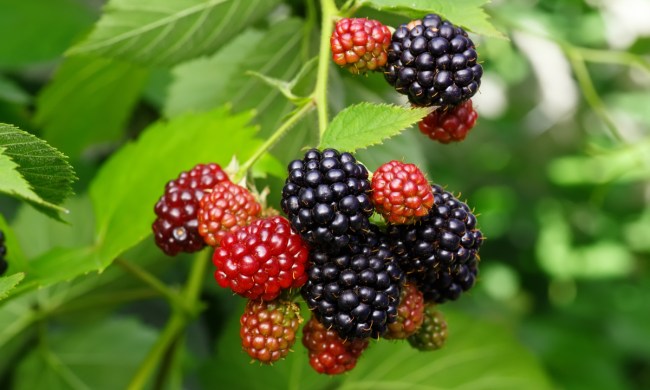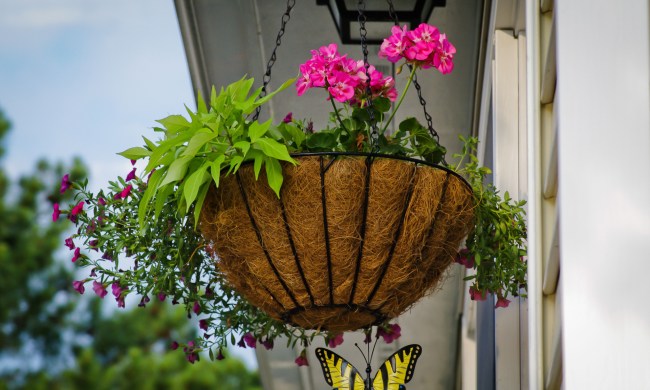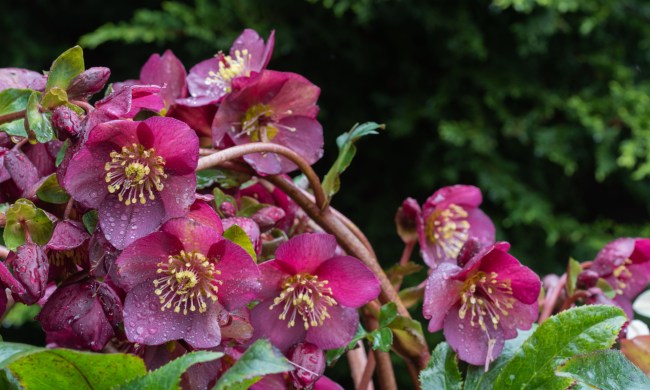If a long, cold winter spent indoors has you feeling down, then planning a spring garden bursting with life and color is the ultimate pick-me-up. From fruit trees to ferns, there are a nearly endless number of plants you can choose from for your garden. It’s overwhelming to figure out where to start. That’s why we’ve put together this guide on flowers to plant in spring to help you get started. Check out these lovely flowers, pick your favorites, and start planting today for your best spring garden yet.
Pansy

Pansies are known for their bright, cheerful flowers that bloom in early spring. Coming in a mix of purple, yellow, blue, and white, pansies are an excellent way to welcome spring. You can plant them in your garden as soon as the ground has thawed enough to be workable, although you can plant them later in the season as well.
Pansies are often used as borders for flower beds, but they are also popular container plants, and they look lovely in hanging baskets to standing flower pots. Pansies can grow in full sun in cooler climates, but tend to be healthier when grown in morning sun and afternoon shade in warmer regions.
Marigold
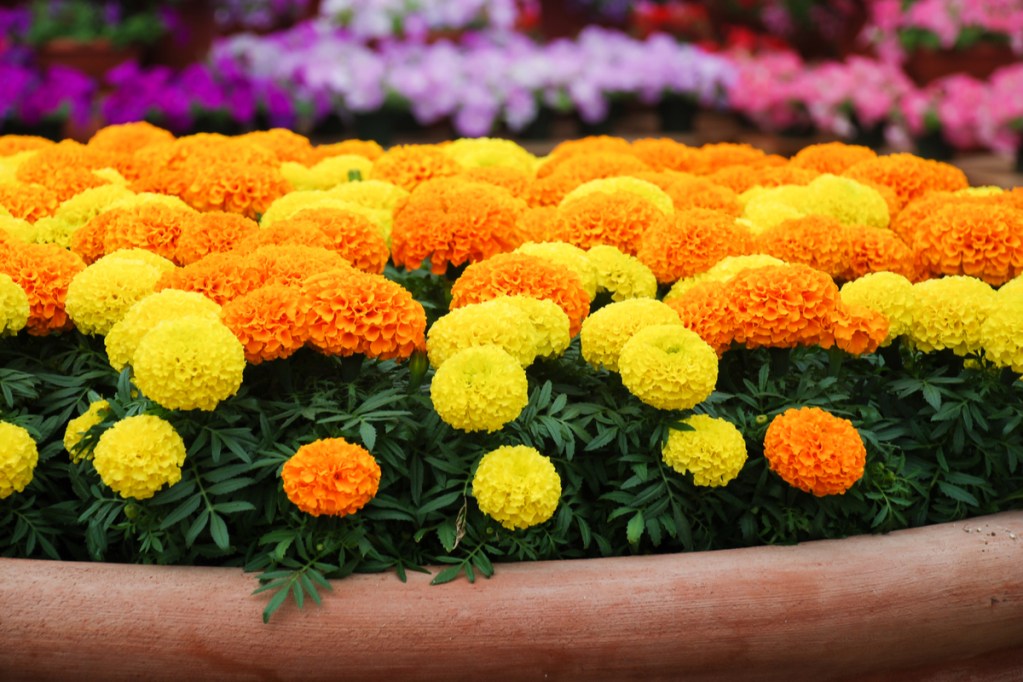
Marigolds may be associated with late summer and fall, but they should actually be planted in spring. You can plant seeds or seedlings outdoors after the last frost of the year has passed, or you can start your marigolds indoors a few weeks before the predicted last frost date.
Marigolds will start blooming in late spring or early summer and continue into fall. While you don’t need to deadhead marigolds to keep them blooming, some gardeners prefer to do so to keep the plant looking neat. Whether in a container or in your garden, plant your marigolds in full sun, and water them whenever the soil dries out to keep the flowers looking fresh.
Zinnia

Zinnias are a member of the aster family native to the U.S. and known for bright colors, layered petals, and drought tolerance. They are quite attractive to pollinators, especially types of butterflies, and can grow practically anywhere due to their hardy nature.
You can plant your zinnias outdoors as soon as the last frost has passed or start them indoors a couple of weeks before then. They thrive in full sun and rich, well-draining soil, but they can also tolerate some shade. Zinnias can grow in either flower beds or containers, and are perfect for patios, porches, and window boxes. They are sensitive to overwatering, so be sure the soil is dry before watering your zinnias.
Columbine

Columbines are lovely native wildflowers with star-shaped flowers, and they’re an excellent choice for shadier parts of your garden. You can start planting your columbines after the last frost has passed, in either early spring or mid-spring depending on your climate.
In cooler climates, columbine flowers can grow in full sun, but otherwise they grow best in morning sun and afternoon shade. They can grow in almost any soil type, as long as it is a well-draining one. Columbine flowers are sensitive to overwatering, so let the soil dry out between waterings. In addition to being pretty, these flowers will attract hummingbirds.
False indigo

Baptisia, also called false indigo or wild indigo, is a great choice for garden center pieces or back borders. It has tall flower spikes lined with small blue, purple, or white flowers that are a favorite of pollinators, especially bumble bees. Baptisia is native to most of the eastern and central U.S., and it is well adapted to the climates there.
Plant your baptisia in full sun for the best results, but it can tolerate light shade as well. The soil should be rich and well draining, and regular watering will help your false indigo plants keep their flowers looking fresh.
Black-eyed Susan
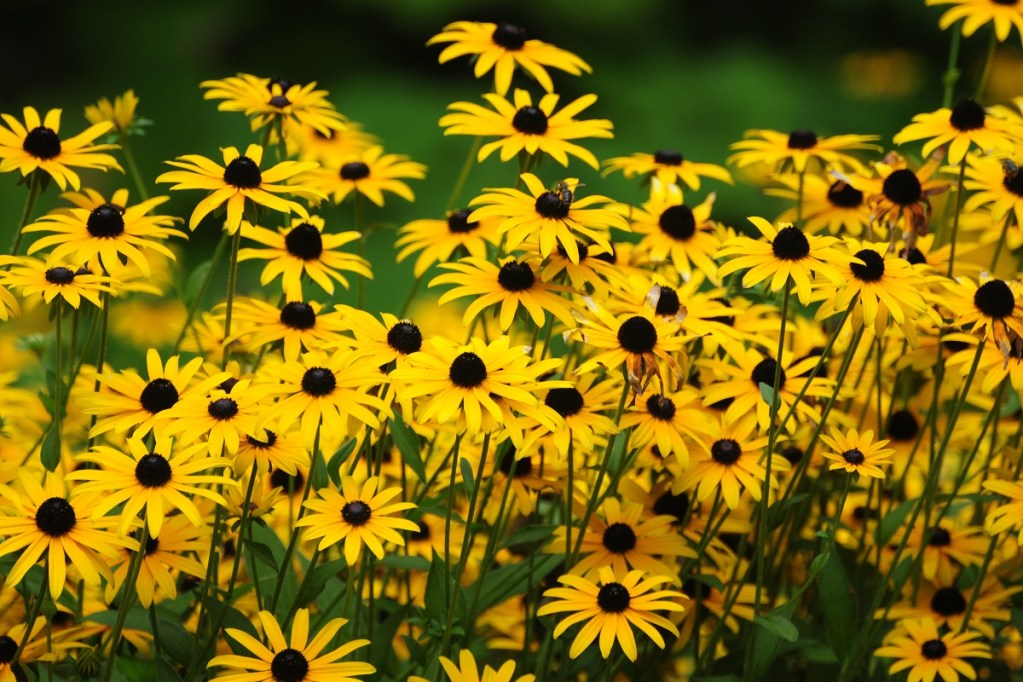
Black-eyed Susans are bright, cheerful flowers that are perfect for adding a little bit of sunshine to any native wildflower garden. They thrive in full sun and well-draining soil, but these plants are surprisingly hardy. Black-eyed Susans can tolerate some shade, as well as other soil types, as long as they don’t receive too much water at once.
In the fall, these lovely flowers drop seeds to grow new black-eyed Susan plants, but the seeds are also a nice winter food source for birds. You can start planting your black-eyed Susans as soon as the last frost has passed, and they are quite easy to grow from seed.
These are a few of our favorite flowers to plant in spring, but they’re far from the only ones! Use these options as a starting point and keep expanding until you have the perfect garden for your home. If you’re low on space, most of these plants will also make a great addition to a container garden for porches or window sills.


